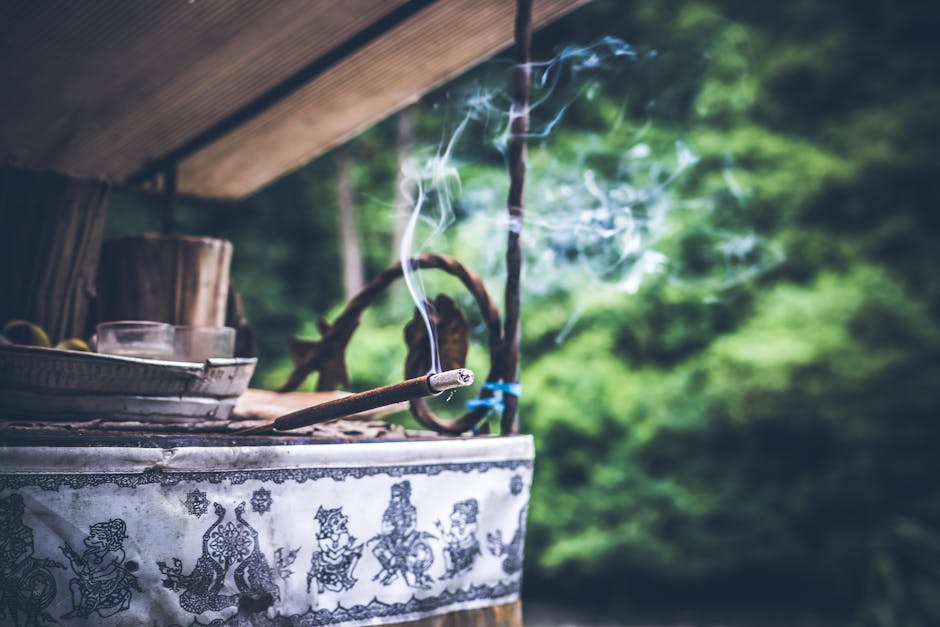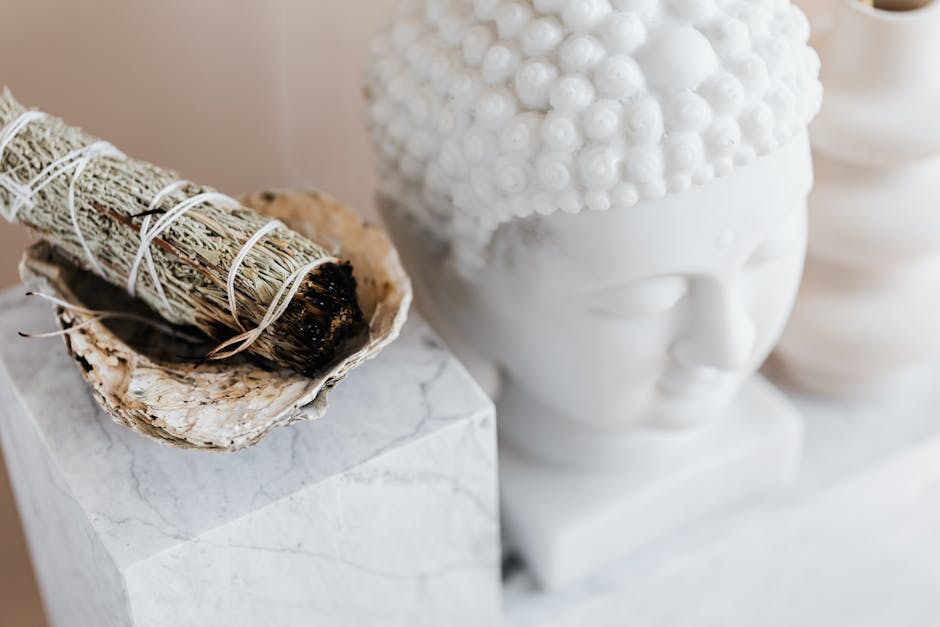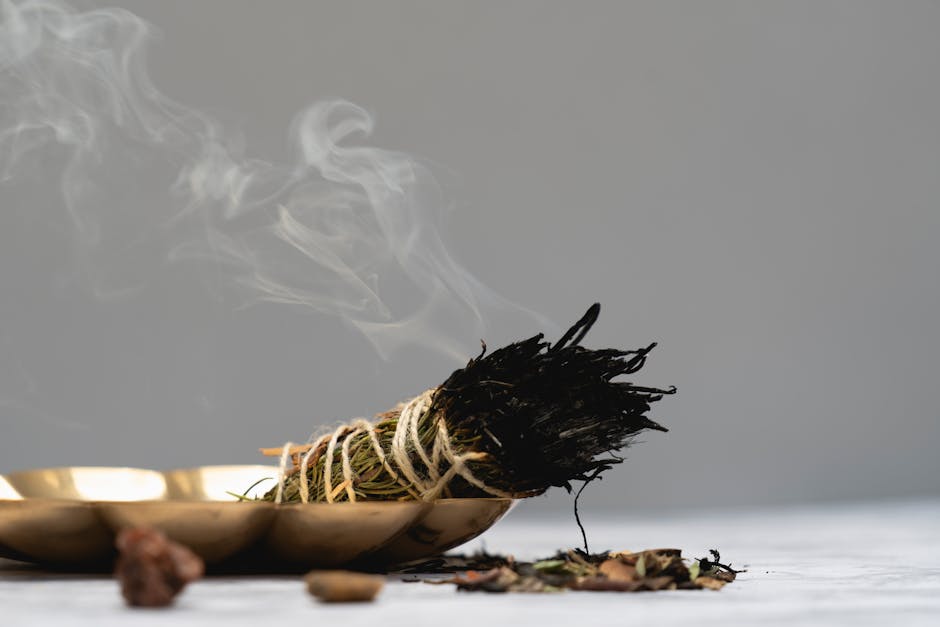The history of incense
Early forms of incense

Long before human beings realized that burning certain materials could set them free, they were using scented sachets to mask unpleasant or dangerous odors.
In fact, our earliest memories of scent are linked to those experiences. One night in early childhood, when I was being taken somewhere (I can’t remember where), I noticed that even though there were no lights, the space was very warm and comforting. That is because I remembered the smell of my grandmother’s garden — all flowers and herbs at once.
I also recall walking along a path through the woods with my father. The sun had just gone down, and everything was getting dark and cold. But then, right on cue, this wonderful fragrance would hit me. It wasn’t like any fragrant thing I’d ever smelt before; it was rich and mysterious. Even now, after not seeing it for many years, I still think of it as perfume.
The discovery of incense

It seems that most humans have been burning things for warmth, as a form of scent therapy, or just to simply cook food since we were creatures long ago.
Incense is a practice that has begun since early times. Religious leaders may use incense to facilitate communication with the deity’s spirits and worshipers. In ancient religions, it was sometimes used as an offering by priests for prayers to be answered. Alongside prayer, incense is one of the earliest known techniques for meditation.
Interestingly, many cultures found ways to burn common objects to aid them in their daily rituals before the introduction of smoking cigarettes.
Types of incense

Despite its simplicity, your experience with incense is deep and broad. There are many different types of this fragrance practice, all relating to how you use it
If you’re familiar with traditional temple incense, you will want to know about scented sandals. These are small pouches of aromatic resin that put up with almost anything, including wet feet! Heated slowly or dipped in water, they release an astonishing array of fragrances.
You can also find crystal gel caps containing essential oils for adding to glasses or dressing tables. Many people prefer these because they don’t require much effort to use.
However, the benefit lies in their effectiveness as perfume. Created over thousands of years by ancient civilizations who discovered their value, everyone from queens to peasants had access to them.
It is believed that royal courts and temples used something similar to scented sandals to mask unpleasant smells while waiting for meals to be prepared or transportation to arrive. Today, we still use them to reduce the smell of certain foods.
The scent of cinnamon has long been known to help control pathogens in food via its antimicrobial properties. But did you know that rosemary can prevent bacteria growth? It makes sense since some versions have found that rosemary improves the quality of meat.
These discoveries led scientists to ask questions about its effect on pathogen reduction in other foods.
How to burn incense
There are many ways to use incense, from cooking recipes designed specifically for the powder (such as mixing it into your favorite dish or sprinkling some onto your food while you eat), to lighting the grain-based sticks to produce smoke, which can then be inhaled.
Using incense

Ancient civilizations discovered that burning certain materials produced unique, pleasant scents
These discoveries led to the development of various forms of liturgy (traditional rituals) and meditation techniques ranging from Buddhism to Christianity.
Incense is still used in religious services today for exactly the same purpose – as a way to enhance the experience of worship and religion.
According to legend, Buddha was burned by bees when he reached Nirvana. Jesus reportedly placed flowers above his head while praying, which is why Christians place spikenard during baptism.
The tradition of using essential oils continues to this day. People who use spices include herbalists, chefs, perfumers, and many others.
The benefits of incense

Aside from its culinary uses, one of the most popular reasons people choose to use incense is its therapeutic properties. According to Dr. Margaret Ross, author of "The Alternative Medicine Guide", several studies have demonstrated that smoking edible herbs contains compounds that can help reduce symptoms in patients with various conditions.
However, before you start puffing on a pipe filled with dried herb concerns, know that it is only one side of the story. While some studies show that her breathing incense may be useful, others claim that it can increase anxiety and depression.
Indeed, putting too much emphasis on herbal treatments can actually do more harm than good. It is still important to see your doctor to determine what works best for you, as there are many different types of incense and plants.
How to make incense

There are many ways to make incense, but all retain their fragrance for days. The most common is the traditional method using dried herbs-either single plants or blends of multiple spices. Different regions have different flavors, so depending on where you live, you may use fresh material instead of dried.
Many people prefer the unique flavor, despite it not being as pungent. You can also make incense from any small herb (not just plants) such as sticks of cinnamon, grasses, lemon peel, coffee beans, or berries.
Incense can be made in a variety of ways. For example, some regions grow more ginger than others, making Jamaican fire; other versions rely on maize (corn), which is used globally.
Most recipes require an equal amount of needle/string and thread amounts. This makes it very easy to adjust the mixture to your desired consistency. Needle and string help keep the needles together while they dry, without becoming hard and sharp as wire should.
There’s no exact way to calculate how much of each ingredient to use. It depends on what size your bundle of needles/strings are, and what size your bundles of needles/strings want to get.
Essential oils

These days, you will often hear people talking about essential oils. What are they and how can we use them?
Essential oils are volatile compounds found in plants. We know essential oils are important to plants because plants only produce one kind of oil.
If you look at a plant like lemongrass or basil, for example, you’ll find that it has an essence almost entirely made up of limonene. Limonene is a compound that acts as a pesticide on the plant, helping protect it from disease.
Volatile chemicals dissipate (get thrown away) quickly due to their nature as gases. Plants have adapted by producing terpenes and terpenoids which act as defenses against pests and other undesirable phenomena.
These same types of defensive mechanisms are what make essential oils successful antifungal agents. And while fungi don’t have the benefit of nicotine in tobacco, alcohol content in drinks, or phenols in tea/coffee, most fungi do not need these substances to survive and grow.
Therefore, when you stop eating those foods with high levels of toxicants and drugs, your body will be able to focus more on fighting airborne pathogens and infected material such as viruses and allergens.
Incense candles
Traditionally, incenses are small sticks or bundles of dried plants, mixed with clay or wood glue to make them burn slowly and quietly.
They are used for spiritual purposes --to aid meditation, remember memories, or create a specific mood. Common forms include Palo Alto and Sandlewood.
Although most people today associate incense with ceremonies and rituals, the first incense were created as part about 150 years ago in China. They were used before they were discovered by humans.
Chinese folk medicine includes many different uses for essential oils. One of the earliest references to using essential oils was written in 3000 BC. It described the use of extracts from herbs to relieve headaches.
This reference also discussed how these extracts could be combined with perfumes to promote aromatherapy. A similar method of headache treatment would not become widely popular until much later.
Incidentally, the word “aromantic” comes from two Greek words meaning "involuntary" and "emotion". Aromatic substances have long been known to have either positive (stimulating) or negative (disgusting) reactions.
In other words, some smells can lead to enhanced feelings such as happiness or comfort, while others cause involuntary responses like tears and coughs. Most plant materials are toxic to one another; however, when introduced into the skin, their active ingredients repair damaged tissue and help produce hormones that boost immunity.
At https://itemsofwonder.co.uk/ we have a vast range of incense supplies.

Comments
Post a Comment